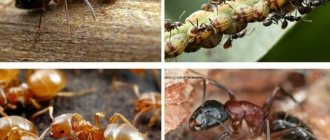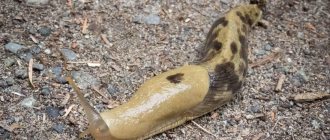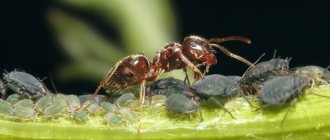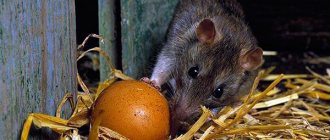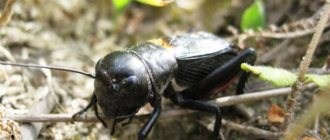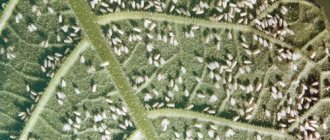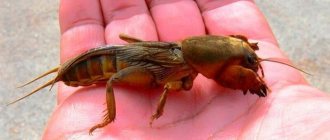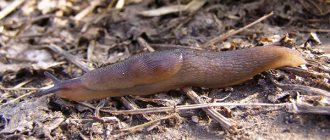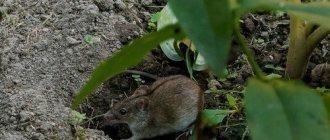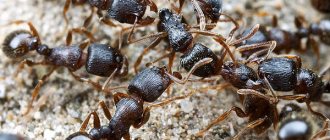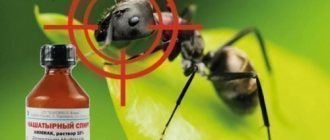general information
The scoop, what is it, is a butterfly - a moth from a very large family, which consists of 15 subfamilies and over 35 thousand species. Night owls belong to the even larger order Lepidoptera , which is represented by a huge number of moths, butterflies and moths.
Cutworm pests are considered the most dangerous and malicious insect of various cultures , despite their absolutely harmless appearance.
Reasons for appearance
Sometimes a vegetable grower does not even suspect that there are cutworms on his plot. Pre-winter plowing and severe frosts regulate the pest population. Those that survive do not do much harm, except for a few eaten tomatoes.
The situation is different in the southern regions. The armyworm population is growing from year to year and it is becoming more and more difficult to fight. This is possible for the following reasons:
- Lack of autumn farming culture. If it is not customary to plow the soil in the fall or dig up the garden, the pupa becomes inaccessible to frost.
- Not thoroughly removing weeds and plant debris after harvesting the garden.
- A huge number of weeds in the garden or neighbors' plots. In this case, she has every chance of remaining unnoticed and continuing to reproduce.
Attention! If frost helps northerners, then southerners should clean their gardens more carefully.
What does it look like?
Insect size. The average wingspan is 2.5-3 cm , the minimum is 0.8-1 cm, and the maximum belongs to the moth agrippina - a tropical beauty with a wingspan of about 30 cm. It is one of the largest butterflies among the world's fauna.
The length of the body of the imago is on average 12-15 mm, the length of the larvae (caterpillars) is 3.5-3.9 cm. The length of the pupa is 2-2.3 cm.
Photo of cutworm pest.
Appearance . The head is usually round, with simple antennae and large round eyes; they can be bare or fringed with short and long eyelashes. The proboscis is well developed, twisted in the form of a spiral. It contains taste receptors.
The entire surface of the body (chest, abdomen and head) is densely covered with scales and hairs. Many varieties also have specific tufts of long hairs. They can be located on different parts of the body.
There are brushes on the legs that cutworms use to clean their antennae, spines, and spurs. The auditory organs are located on the back and abdomen and are superbly developed.
The wings are shaped like triangles - rounded, isosceles or elongated. The front ones are always longer than the rear ones and fold into the shape of a roof. In some species, the wings are adapted for long and high-speed flight , therefore they have parallel edges and a long narrow shape.
The coloring is usually inconspicuous; the main color can be beige, gray, chestnut and dark brown. The front wings are painted with round , wedge-shaped and oval spots, transverse lines, and winding stripes.
The hind wings are most often plain, sometimes decorated with discoid spots and a border along the edge of a darker shade. The coloring is often faded, gray or beige, but in some subfamilies the wings are yellow , blue or red.
Cutworms are the only family of insects that have the ability to echolocate. They pick up ultrasound up to 150 kHz. They use this skill simultaneously with visual perception.
Economic importance
Cutworm.
Winter cutworms are particularly voracious and fertile. The caterpillar destroys wheat and winter rye. It chews through the stems. This is fraught with thinning of crops. They feed on beet roots, which leads to slower growth and reduced weight of the fruit. In vegetable crops, they gnaw holes in young leaves or eat them whole.
In the central and northern regions of the Russian Federation it feeds on rye and potatoes, and in the southern regions it feeds on corn, tobacco, millet, and cereals.
Features of development
In the spring, adult flight and mating begin . During this period, the imago requires increased nutrition, which is possible only in the presence of suitable flowering plants.
After this, the female begins to lay eggs every day and continues throughout the entire period of her life. Within a week, caterpillars begin to appear . They are distinguished by their nocturnal activity and strong gluttony.
Having gone through all generations, the spring caterpillar pupates in the summer , hiding under leaves or in the ground. After some time, an adult butterfly emerges from the pupa.
Over the summer, 1 or several generations of pests may appear, depending on the characteristics of the species and weather conditions.
Optimal development conditions.
All types of cutworms prefer warm weather , the most suitable temperature ranges from 21-28°. Reducing it to at least 17-18° causes a decline in the activity of all life processes, in butterflies there is underdevelopment of the products of the reproductive system, and fertility drops significantly.
Many species, in addition, are able to exist only under conditions of high humidity - at least 80%. Given optimal criteria, huge populations of the pest develop.
During wintering, the most favorable conditions are mild winters without severe frosts and a thick layer of snow throughout the cold period.
How long does he live?
The full life cycle of the armyworm takes about 50-70 days in the presence of favorable climatic conditions. A decrease in temperature slows down normal growth and increases development time.
The eggs develop in 4-10 days, the caterpillar goes through 5-6 generations and up to 5 molts , this process takes an average of 14-19 days.
Then the larva pupates and develops underground for about 14-16 days.
The lifespan of the imago after emerging from the pupa lasts from 12 to 25 days.
Tips on folk remedies
To repel butterflies, you can spread or hang egg shells between beds of plants and rows .
Baits for catching adult cutworms are made from sweet drinks that can ferment. These include any syrups, molasses, kvass, juice, beer, liquid jam. Place the bait in small containers such as yogurt jars . Don't forget to remove any scoops you find.
Birds are very fond of cutworm larvae, so their attraction will significantly reduce pest populations. Flycatchers, titmice and sparrows are especially helpful . You can make feeders and nest boxes for them. Chickadees will be attracted to pieces of unsalted lard.
If you plant cilantro and basil next to possible victims, cutworms will not approach the plantings and will begin to fly around them, since they cannot stand the smell of these herbs.
Scoop eggs
What do they look like?
The eggs are spherical or hemispherical in shape . The top is rounded, the bottom is flattened. The diameter varies from 0.4 to 0.9 mm. The color is most often light - it can be white, cream, light yellow, greenish, blue, pale brown.
The surface is usually ribbed and shiny, sometimes cellular. As they develop, the eggs may darken and change color. For example, bollworm eggs become almost black shortly before the larva emerges.
See photo for what cutworm eggs look like.
Where does it go?
The female hides the eggs, placing them on the ground, in plant debris , on the inside of leaf blades of food or weed plants. The shape of the masonry is irregular and asymmetrical. May be in the form of spots, winding rows and lines.
For additional protection, the female covers the eggs with her own hairs and scales or secretions of special glands.
What is the quantity in the clutch?
Female cutworms are famous for their fertility for good reason. One adult produces from 2 hundred to 3 thousand eggs during its short life. She lays eggs daily, placing them singly or in groups. A clutch can include from 2 to 150 eggs. The quantity depends on the type.
For example, the cabbage cutworm lays a clutch of 100 eggs, and the gamma cutworm lays eggs one or two at a time, with a maximum of 5.
Biological method
There is nothing better than using their natural enemies to combat cutworms. This is what the biomethod is aimed at. To solve this problem, you can use Trichogramma, which eats armyworm eggs. This predatory insect is released when the armyworm lays eggs, at the rate of 350 insects per hundred square meters.
In addition, domestic and imported biological products are available for sale that effectively suppress the development of armyworms and are absolutely harmless to humans. The active ingredients in them are usually strains of fungi or bacteria that infect the pest. The following brands have gained the most popularity among biological products:
- Fitoverm;
- Entobacterin;
- Bitoxibacillin;
- Aktofit;
- Agravertine;
- Nature Guard.
Larva (caterpillar)
What does it look like?
It has an elongated thick body, most often naked, less often covered with sparse hairs. They can be evenly scattered throughout the body or grouped in small groups.
The main color is green, gray, yellow or chestnut, with purple and pink tints. The pattern is characteristic of the cutworm family , it includes a longitudinal light stripe running along the back, and thinner and darker stripes on the sides.
Photo of cutworm larvae.
The larvae have thoracic legs (3 pairs), abdominal legs (3-5 pairs) and false legs (4 pairs). The youngest and oldest caterpillars often do not have abdominal legs, or they are underdeveloped.
Stages of development.
During the growth process, cutworm caterpillars molt from 3 to 5 times, depending on the species and living conditions. They go through 5 or 6 generations. The larvae of the first two instars are considered young , and the last two instars are considered adults. In many species of cutworms, it is the adult larvae that hide for the winter, which, after emerging, severely damage young shoots, seeds and buds of food plants.
Scoop caterpillars photo.
The stages of development do not differ much from each other in appearance ; only the proportions of the body and head change. The initially large head shrinks and the body elongates. The coloring remains largely unchanged.
Prevention measures
Killing caterpillars is not an easy process. To prevent them from appearing:
- alternate different cultures;
- remove weeds, as they provide food;
- collect emerging pests with their hands;
- when the caterpillars increase, a drug is selected for elimination;
Owl butterfly.
- if previous means are ineffective, chemicals are used;
- to combat butterflies, lay eggshells between the rows;
- baits in the form of sweet water are placed in small jars;
- Basil and cilantro are planted so that their aromas repel pests;
- After harvesting, the area is dug deep to reduce the number of surviving insects.
What does it eat?
During the period of flight and mating, the imago feeds on pollen of flowering plants without causing them the slightest damage. The armyworm and its caterpillars are a serious problem, eating above-ground parts and destroying plants.
Cutworm caterpillars fall into three categories:
- Intrastem - settle in thick stems and feed on their contents, causing the death of the entire plant.
- Gnawing - live in the ground, gnawing roots and basal parts.
- Leaf-eaters - live on plants, eating all the green mass - leaves, young stems and shoots, buds and inflorescences. Most representatives of the noctuid species fall into this category.
Owl butterfly photo.
What plants does it damage?
The noctuid family consists almost entirely of polyphages. The cutworm is classified as a pest of cereals, vegetables, ornamentals, fruit pome and stone fruits , industrial crops, legumes, cruciferous crops, oilseeds, berries, conifers, greenhouse crops, greenhouse crops, grapevines, perennial grasses, lawns, nurseries and meadows.
In general, we can say that the percentage of plants that do not attract cutworm caterpillars is very small .
Description
The front wings are brick-burgundy or dirty gray in color. The hind wings are much smaller than the front wings and are reddish, dark gray or blue in color.
Butterflies rarely fly during the day, mainly at dusk or at night. At the caterpillar stage, individuals live in the ground, feeding on roots, root crops or the above-ground parts of plants. Entire cavities in root vegetables are eaten away, leaving the skin intact.
What harm does it cause?
Cutworms have long been considered dangerous pests of various crops ; some species are classified as a quarantine type. These are bollworms, meadow cutworms, Asian cottontail cutworms, cabbage cutworms and Finnish cutworms.
To completely destroy 10 plants overnight, only 2-3 to 7-8 caterpillars of different species are required. Therefore, the damage caused by cutworms is colossal and amounts to up to 100% of the entire harvest.
Some species are also barn pests. Once in storage, they do not die, but continue to feed on the grain placed in storage . To such types of cutworms as grain and ordinary grain, dry grain seems no worse than fresh grain.
It should be borne in mind that the better the living conditions, the more fertile the females, the more active the caterpillars, the faster the destruction of poor plants occurs. The greatest damage is caused by the older caterpillars of the latest generations.
Controlling the exclamation jay
Cutworms are known to avoid sunlight and hide in bushes, tall grasses and flowers when the sun comes out. To find out if these moths are visiting you, find some bushes or tall grass and shake them. If they are present, you will see large gray moths flying in a zigzag pattern. Many look like falling worms.
If the weather is warm enough, it is possible that cutworms will develop into another generation of caterpillars. In cooler weather, the cutworm's life cycle slows significantly, as does its appetite for grains, roots and grasses.
Later frosts mean moths such as cutworms need more time to reproduce and create a new generation.
